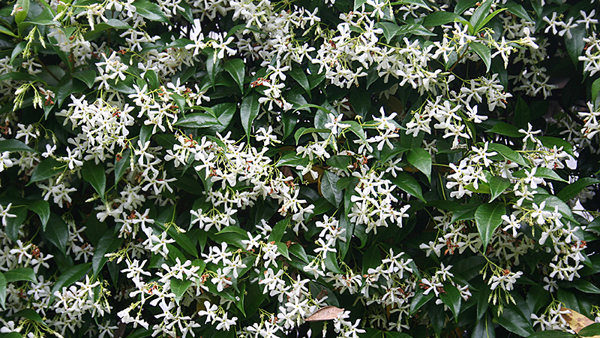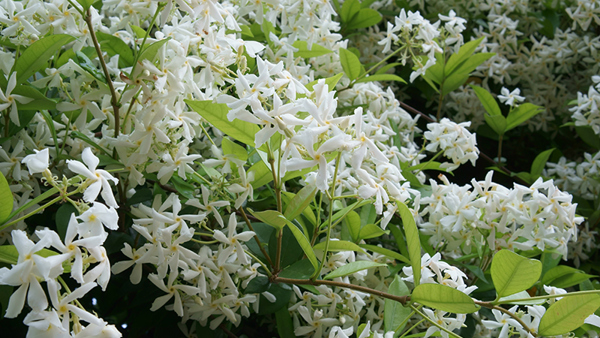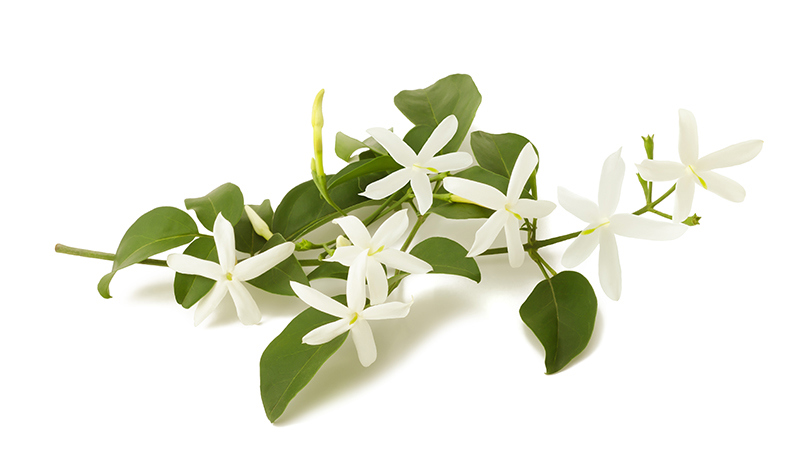Yates Account
Join now
Create a Yates account today!
Sign up to join the Yates Garden Club for monthly e-mails packed with seasonal inspiration, tips for success & exclusive promotions.
Plus if you’re a Garden Club member you can take part in the Yates Growing Community - a blog to share successes, get advice & win prizes in fun challenges along the way!

Forgot password
Enter the email address associated with your account, and we'll email you a new password.

Jasmines (Jasminum spp.) are vigorous, twining or scrambling vines with sweetly scented flowers that appear in spring or summer,depending on species. These plants are susceptible to frosts and are best grown in subtropical to warm temperate climates.
How to grow jasmine in a garden
- Choose a sunny spot with well-drained soil. Enrich the soil with Yates Dynamic Lifter Organic Plant Food. If the soil is clay-based, add gypsum and fork in well.
- Dig the planting hole twice as wide and to the same depth as the root-ball. Remove the shrub from the container, gently tease the roots and cut away any circled or tangled roots.
- Position in hole and backfill with soil, gently firming down.
- Form a raised or doughnut-shaped ring of soil around the outer edge of the plant's root zone. This helps keep water where it's needed. Always water in well after planting to settle the soil around the roots and keep the soil moist for several weeks while the new plant establishes.
- Mulch around the base with organic mulch like bark chips, woodchip or pea straw, keeping it away from the base of the plant.
- Water deeply, once or twice a week, depending on weather conditions.
- Feed regularly with Yates Thrive Rose & Flower Granular Plant Food. TIP: For an added boost apply Yates Thrive Roses & Flowers Liquid Plant Food.


How to grow jasmine in a pot
- Choose a pot at least 500 mm wide. Position in full sun and fill with quality potting mix, such as Yates Premium Potting Mix.
- Remove the shrub from the container, gently tease the roots and cut away any circled or tangled roots.
- Position in hole and backfill with potting mix, gently firming down. Water in well.
- Mulch around the base with organic mulch like bark chips, woodchip or pea straw, keeping it away from the base of the plant.
- Water deeply, once or twice a week, depending on weather conditions.
- Feed every 1 to 2 weeks with Yates Thrive Roses & Flowers Liquid Plant Food. TIP: For an added boost apply Yates Thrive Natural Fish & Seaweed+ Plant Food Concentrate.

Growing tips
- This vigorous climber needs support to grow, using a trellis or growing on an existing support is essential.
- Hard pruning can be carried out after flowering when necessary.
- They do not respond well to frost, but some species can tolerate frost up to -5˚C
Hellebores are the moody, gothic jewels of the winter garden. Learn how you can grow them in garden or in pots.
Gardenia
Gardenias have soft scented blooms in white or yellow. Depending on the variety, can be grown as a shrub, standard, hedge or ground cover.
Freesia
Freesias are a spring flowering bulb that produce scented blooms in a range of vibrant colours including pinks, white, yellow, mauve and red.
Flax
Flax (Phormium spp.) are highly versatile plants which can grow well in swampy or dry conditions. Great for large pots or en-masse in garden beds.
Recommended products
Yates Thrive Rose & Flower Granular Plant Food
Specially formulated to grow all types of flowers. With high potassium for large & abundant flowers, added calcium & iron for stronger flowers.
Yates Premium Potting Mix
A premium potting mix, ideal for all potted plants and shrubs, including ornamentals, fruit trees, vegies and herbs.
Yates Thrive Roses & Flowers Liquid Plant Food
Provides your flowers & roses with the balanced nutrients they require for healthy growth and flower production.
















Share
Share this article on social media